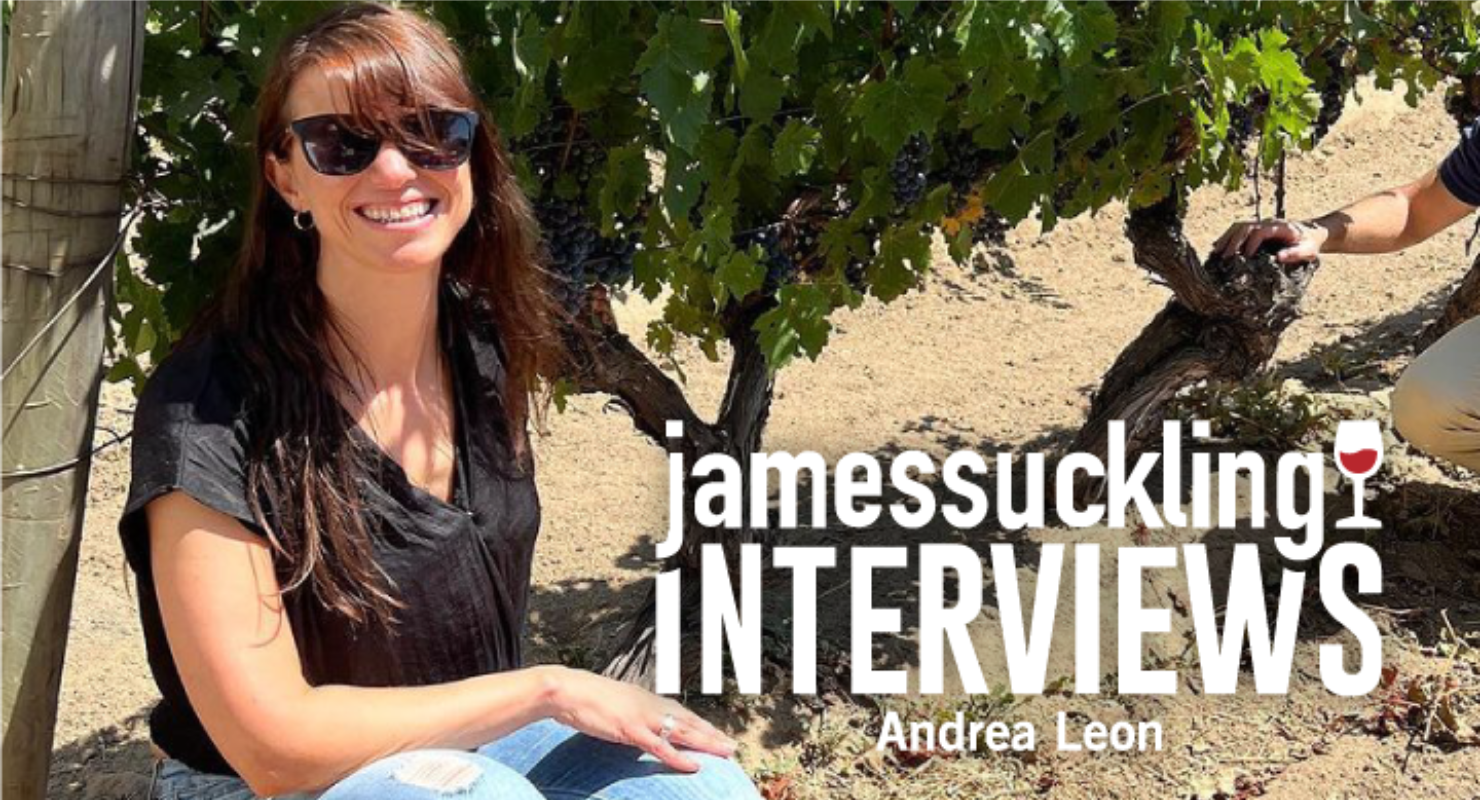
JamesSuckling Interviews features innovative and influential winery owners, winemakers and industry notables representing the new generation that is shaping tastes, trends and techniques in the greater wine world.
________________________________________________
Andrea Leon, the technical director and winemaker at the Lapostolle and Clos Apalta wineries in the Apalta subregion of Chile’s Colchagua Valley, brings a combination of science and artistry to all aspects of her roles since joining Lapostolle as an assistant winemaker in 2004. Founded in 1994 by Grand Marnier heiress Alexandra Marnier Lapostolle and her husband, Cyril de Bournet, Lapostolle’s intrepid focus on their single high-elevation site, Clos Apalta, and its century-old pre-phylloxera cabernet vines eventually led to wines that put Lapostolle and the Apalta subregion itself on the premium winemaking map.
Initially working with consultant Michel Rolland, Leon brought an eye for adaptation and innovation to her native country after early-career work in France, Italy, the United States and New Zealand. For the last two decades, she has been integral to the establishment of Lapostolle and Clos Apalta, alongside current CEO Charles de Bournet, as Chile’s leader in collectible, terroir-driven wines, and she has also been a trailblazer in discovering new varieties, especially from the Rhone, and in elevating Chilean wines on the global market. JamesSuckling.com earlier this year gave 100-point ratings to their Clos Apalta Valle de Apalta 2021 and Clos du Lican Apalta 2021 wines, and their offerings regularly make our annual Top 100 Wines of Chile and Top 100 World Wines lists.
JamesSuckling.com’s Susan Kostrzewa recently talked with Leon about the unusual quality and character of the Apalta subregion, why Apalta’s varietal syrah and viognier wines are the ones to watch, the importance of preserving Maule’s old vines and how Chile can break free from its “cheap and cheerful” wine persona worldwide.
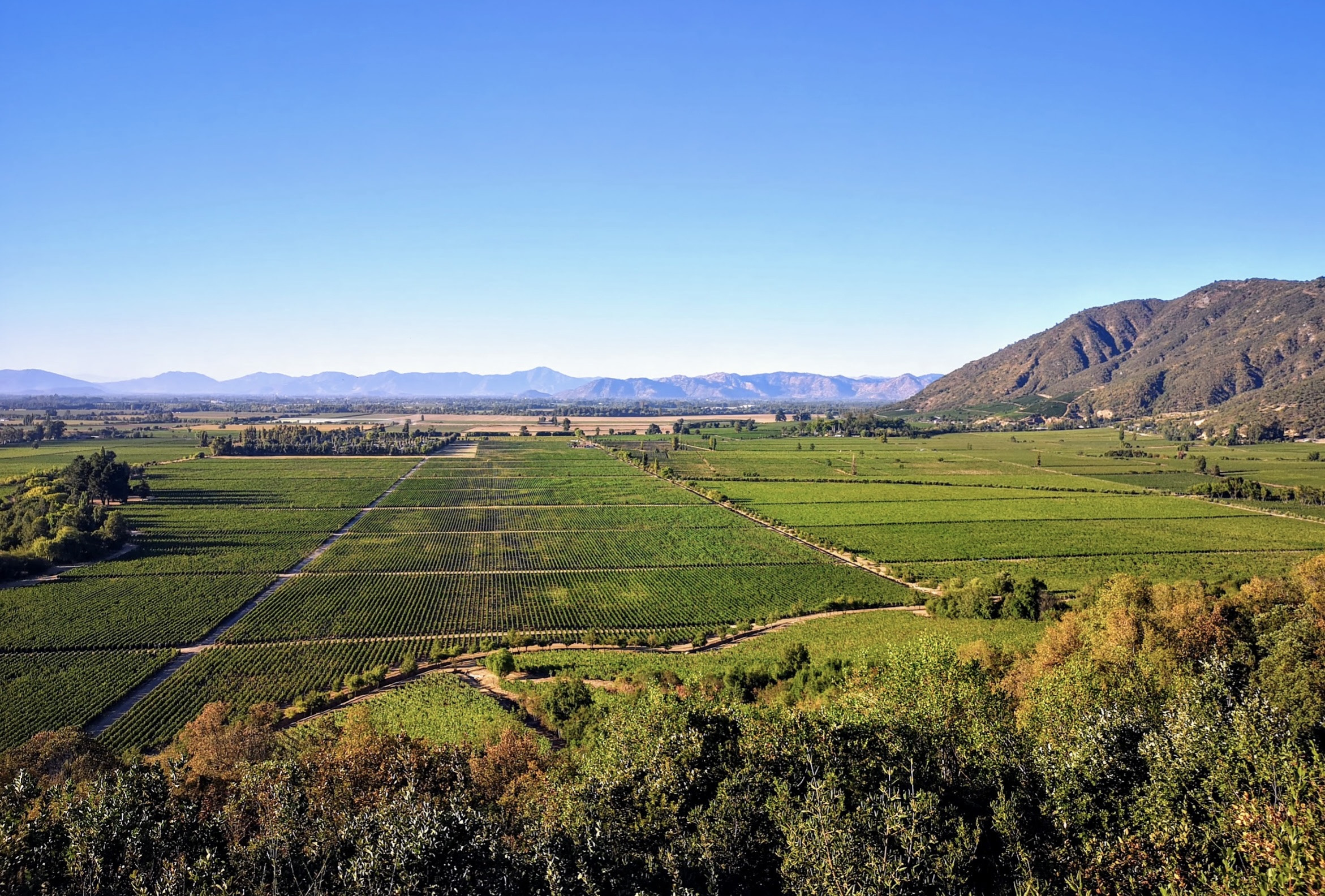
Congratulations on your recent 100-point scores on the 2021 Clos Apalta and the 2021 Clos du Lican. What was your reaction to the ratings, representing some of the highest ratings of Chilean wine on the market?
It’s an honor as 2021 wasn’t an easy vintage for many reasons, including years of Covid. It shows the consistency of Clos Apalta during a very memorable and challenging vintage. The team was super excited and we were very grateful and humbled, but happy and proud as well. It’s also a great responsibility. There’s not much room for mistakes. There’s a lot of precision needed, and there are a lot of new challenges you have to face, in order to keep consistency and this kind of quality in a world that is very much changing. But it was a beautiful moment.
Can you talk about what makes Apalta so unique as far as terroir and microclimate?
It’s a very peculiar little corner of the wider Colchagua Valley and was recognized as a separate Designation of Origin in 2018. On paper, it’s quite young, but there are old cabernet and carmenere vines dating back to 1907 here. So there’s a long tradition of vine growing and winemaking in the area. Apalta in Spanish means “poor soil,” or “bad place.” It’s a granitic soil, well decomposed of colluvial origin. Apalta has a southern exposure, which is quite rare, and is surrounded by hills that run east to west. So it’s kind of a closed amphitheater with a river cutting through it in the south. It consists of a lot of little pockets nestled between more than 800 hectares of wild forest with a river, so you also have some alluvial soils at the bottom of the valley. This creates a complex terroir that allows you to plant many different grape varieties. We have more than 16 wine varieties here between our two estates, ranging from semillon all the way to cabernet sauvignon and including cinsault, grenache, mourvedre, carmenere, petit verdot and so on. We have more than 16 types of soil, and elevations vary from 200 to 400 meters above sea level. We have very steep hillside vineyards and very low-valley-floor, old-vine vineyards. It’s diverse but quite challenging.
You’ve been committed to sustainable and environmental stewardship throughout your winemaking career, with a degree in environmental biology. Why do you think this approach is so important and what are your sustainability plans for the future?
Charles de Bournet’s mother, Alexandra, was very committed to us being organic early on, from 2011. And then came biodynamic. Today, we’re organic but not certified biodynamic any longer as we moved toward a more holistic view. At one point we had more than 400 hectares of biodynamic-certified vineyards, but we felt that there were certain practices that we needed to adapt to, as far as what Chile is and what the realities of a producer are. We have a more of a scientific approach in certain matters. I think it’s very important to see the estate as a farm and to incorporate different elements and recycle everything; to have a close, self-nourishing system. We also integrated the sustainable code from Wines of Chile to add the social side of sustainability regarding the communities that surround us.
Can you talk about the environmental changes you’re experiencing and how you’re handling them?
Central Chile, our main area for agriculture, is drying out. When I arrived in the area, there were 800 millimeters of rain a year on average; today we are roughly hitting 600. Temperatures and irradiation are climbing. We have much less stable conditions.
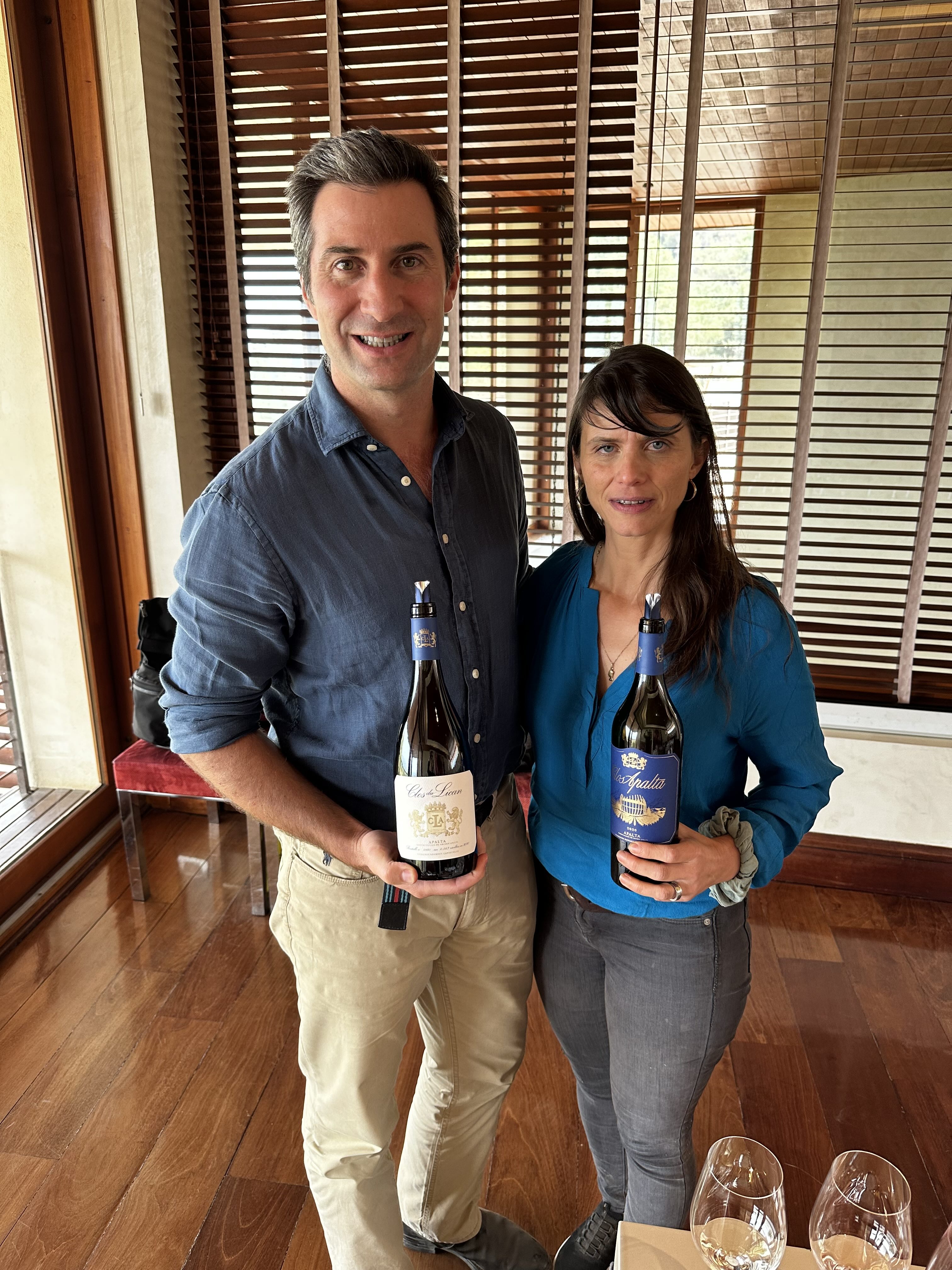
Our weather changes a lot between El Niño and La Niña swings, with climatic phenomenon like atmospheric rivers – which bring lots of rain in the middle of the summer like in 2021 – and very hot and dry seasons followed by much cooler temperatures. The challenge is to be in the vineyard and read the changes as soon as you can.
It’s great to use tools to analyze data in terms of climate, of temperatures, of the soil and of the roots, but you need to be in the vineyard and see what is happening; you need to have a great team. So that has forced us to look block after block. You learn every little pocket of the vineyard and manage it differently every year. We’re pushing the vines to be self-sufficient and to endure these new conditions. It’s also important to remember what happened in the past to make your best bet for the future, and to listen to older people who experienced a lot in the vineyards. The old recipe of viticulture is gone, especially in a terroir as complex and rich as Apalta.
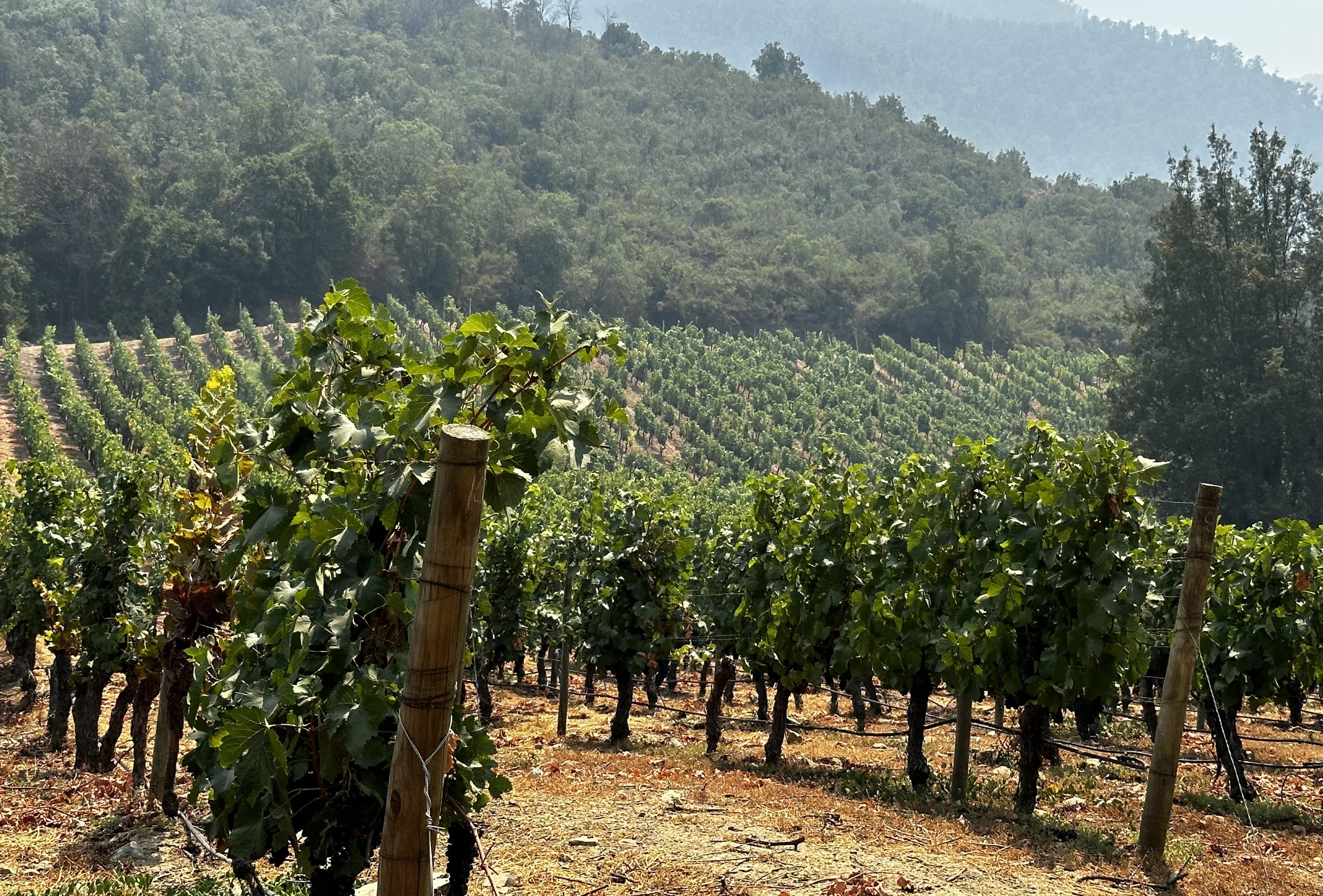
On your wineaking style, can you talk about any evolution in approach over the years toward more minimal intervention or a more direct and transparent reflection of your unique terroir?
The Marnier-Lapostolle family has always been focused on making 100 percent terroir-driven wines, but there’s a natural evolution after 30 years of learning and of trial, error and successes, and we naturally move toward approaches that express the terroir in a very honest and precise way. In terms of style: less extraction, very long skin contact in the tanks that we adapt to the variety or to the vintage conditions, a little less oak in Clos Apalta, less new oak as well. This is also because of the leadership of Charles and his vision, but it’s been a very natural process. Any changes we’re doing are quite subtle. We also have these newer hillside vineyards which weren’t here 30 years ago and brought a spicier profile. Those vineyards ripen earlier, so we harvest them a little bit earlier as well. And that brought another dimension to the wine, naturally.
What inspired your Clos du Lican single-vineyard syrah project?
I love the Rhone/Mediterranean varietals. They’re a great match for the conditions we have in Apalta. Charles’ mother planted 10 hectares of syrah on a steep hillside. It was a crazy project and nobody could believe what she accomplished. It was always part of the blends of Lapostolle, in particular the cuvees. When Charles came on board, seeing the potential of the terroir, we thought we should do something special with it. And that’s when we started doing trials and micro-winemaking of all these different parcels of syrah. The complexity of the [Clos du Lican] wine comes from the expression of those different parcels that are on a big cliff, on the edge of a beautiful forest of native trees. That definitely gives it a big personality and we play with the different expressions of these parcels. Our first vintage launch was in 2019, after quite a few years of trials. Along with syrah, of course, came other great varieties from the Rhone: grenache, mourvedre and viognier.

Let’s talk about the Clos du Lican Apalta Côte de Madame viognier. Why viognier over chardonnay?
I make mostly reds, but I love rosé and white. That’s what I normally drink as well at home. We have two little parcels of viognier. They are at the top of the vineyard, on the cooler side. It was a great challenge as it’s a difficult variety to work with, but we did the same trials [as the syrah], learning year after year and launching it in 2021. It’s a small production coming from a tiny vineyard with two very different exposures and conditions. We do two harvests that do very different things to create this beautiful complexity. It’s too hot here for chardonnay so viognier was the way to go.
What’s the potential of Maule, especially for carignan, and what makes it special as regards the benefit of old vines there?
As a winery we’ve been committed to old vines in general and to appellations with an eye to the future. We’re part of an association of wineries, Vigno, that promotes old-vine carignan in Maule in southern Chile. As far as Vigno guidelines go, the vineyards need to be dry farmed, over 60 years old and the wine needs to be 85 percent carignan. It needs to be aged for two years before reaching the market. There are a whole set of rules for the label which go beyond the geographical divisions that Chilean appellations normally use. Vigno wanted to go further and certify those vineyards. Today, the price of the grapes has increased consistently because of the quality of the wines. It’s a collective project with quite a few big and small wineries and it keeps those old vines alive, looked after and producing because the growers get a really good price due to the wine quality and resulting press. We make a very small amount of carignan from a vineyard on the coastal side of Maule that has a fresh, light, ethereal expression. We’ve worked with two growers on a long-term basis in order to preserve these vineyards that would otherwise, because of normal economics, not still be in existence in southern Chile.
FROM THE VAULT: LEGENDS OF CHILE
You were originally cultivating grapes in northern Chile but decided to pull back. Why?
We used to have vineyards in Casablanca and in Requinoa. In Casablanca, we mainly decided to pull back because of a lack of water and [issues with] animal pests. It was really beautiful vineyard but extremely challenging. It was also the time when we split from Lapostolle and needed to focus here in Apalta, to follow what the French family vision was and what the French do, in terms of becoming hyper-focused in one area. I was mentioning all the new challenges we’re having because of climate change etc.; if I was spending half of my time or our team half of their time driving between vineyards, it would have been much more complicated.
One of the key decisions the family had made over these last 10 years is to focus on Apalta. Today, it’s a D.O with amazing but complex terroir. You need to have your team on site. We have seen how that really changes the game and this that’s why in France, the chateaux are in one appellation to get the most out of it.
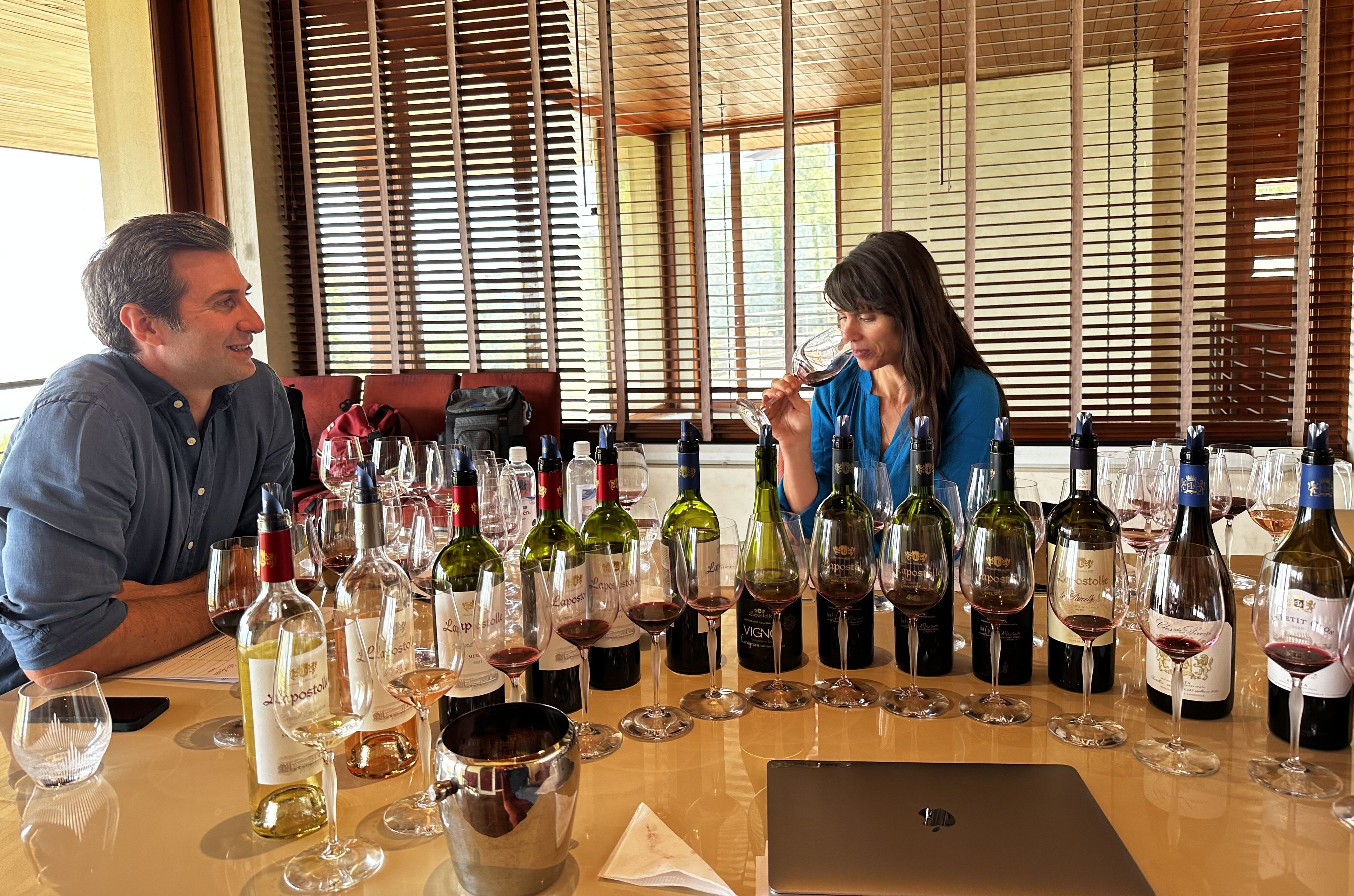
What do you believe is the future of Chilean wine as a category as sales decline, and what would you consider to be the biggest challenges for Chilean wines right now in the global market? Is the commodity market over and do you believe estate wines are the future?
Estate wines are the future. I think that especially for a country like Chile, with all its diversity, it’s definitely about wines that are terroir-driven, quality-driven. I think we need to focus on our appellations and make them easier for the wine lover to understand, rather than them just associating us with tons of great cabernet sauvignon. We’ve been known to make cheap and cheerful wines that are great value and are very reliable. But we need to move up the ladder and we need to talk about our land, our people, our territories, our beautiful natural world and our beautiful wines in terms of diversity, quality, terroir. Now, when you go to a restaurant, you open a wine list and you see Bordeaux, you see Rhone, etc. but Chile is still “Chile.” There’s such an amazing diversity difference between a cabernet sauvignon from Maipo, from Puente Alto, from Apalta. Chile is a country great at making commodities, but we need to move away from that.
As wine consumption worldwide declines, the industry is considering ways it could better attract and retain customers, especially among the younger generations. What are your feelings about how not only Apalta, Colchagua and Chile can do a better job of attracting new consumers, but how the wine world on the whole could be smarter in doing this?
I don’t think in two years the world will stop drinking wine. I don’t think that our customers who buy fine wine, buy quality-driven wine, buy wines that are part of a terroir and have a cultural side to them have disappeared. I think we need to kind of ride the wave of the current conditions and see. As for the younger generation, they want to know what they’re eating, what they’re drinking, where it comes from, if it’s a legitimate product, if it’s an honest product, if it’s true to its nature, and what does it bring into the world? And in that sense, sustainability is key. We will focus on quality. We’ll focus hopefully on estate wines – talk about the wines, be clearer about the appellations, about how the wine is made, where it comes from, how it tastes, and make it simpler. The wine industry is not a short-term turnaround. We need to be patient. Hopefully, if we’re going to drink less wine, it will be a much better-quality wine.
– Susan Kostrzewa
The post JamesSuckling Interviews: Andrea Leon appeared first on JamesSuckling.com.







